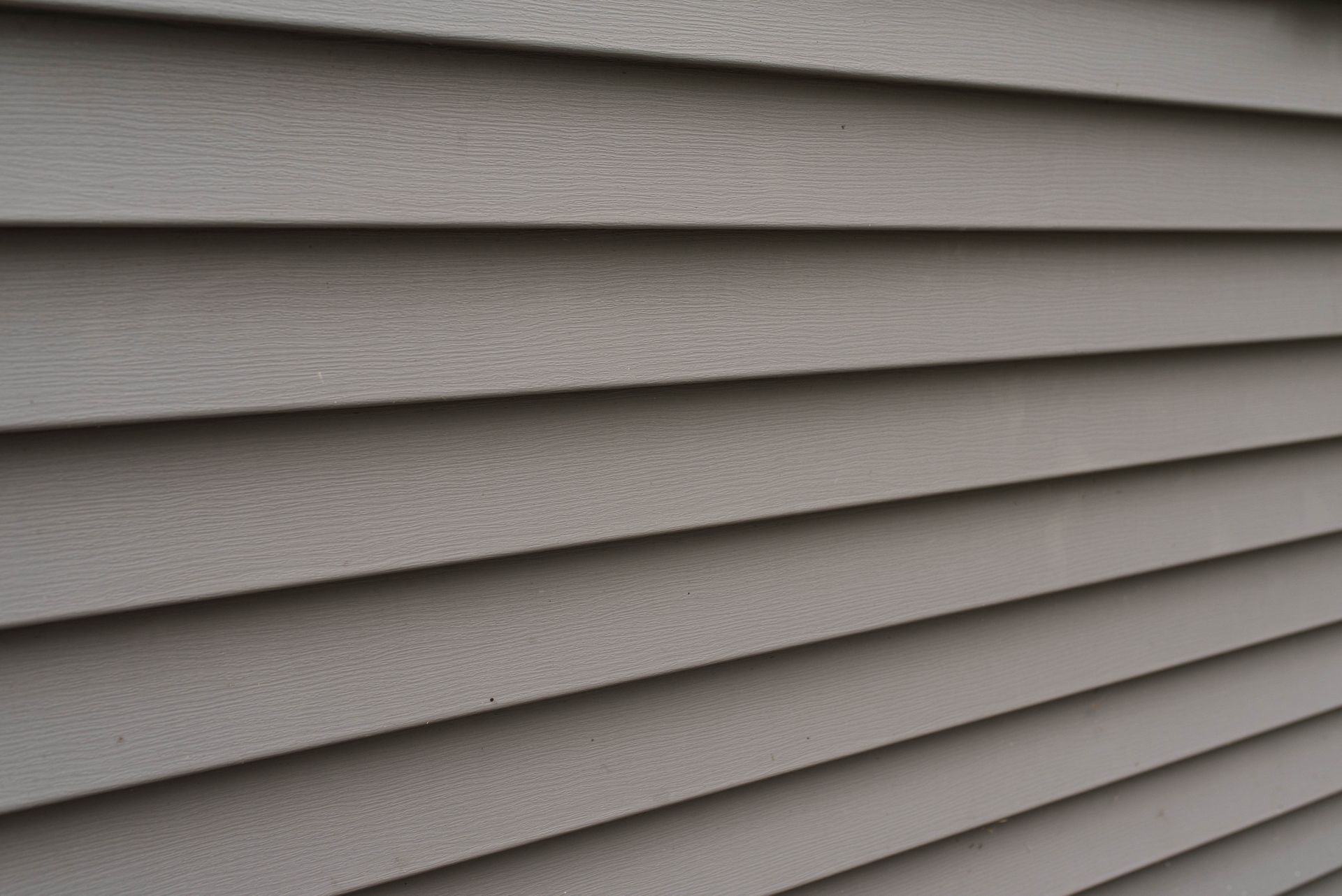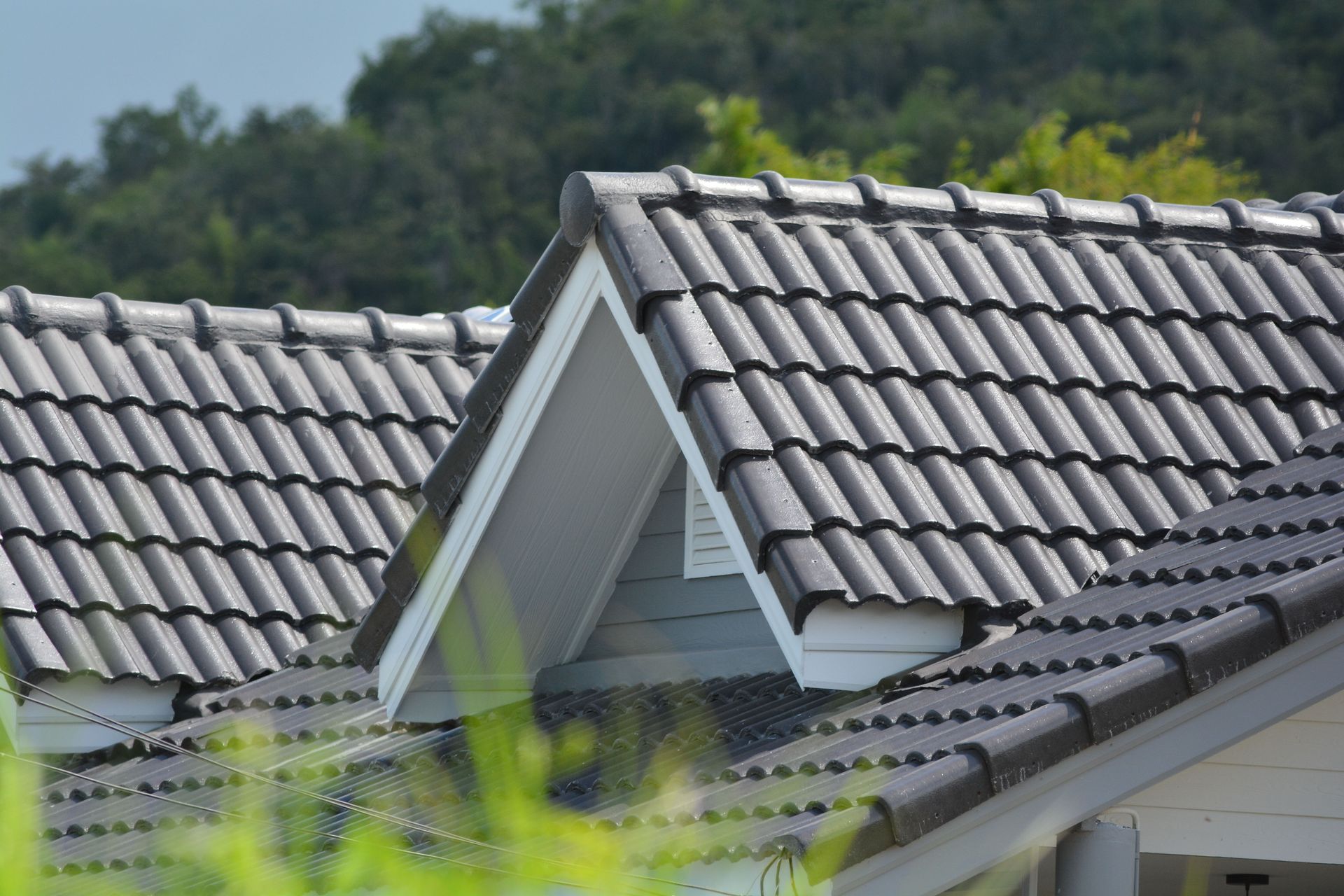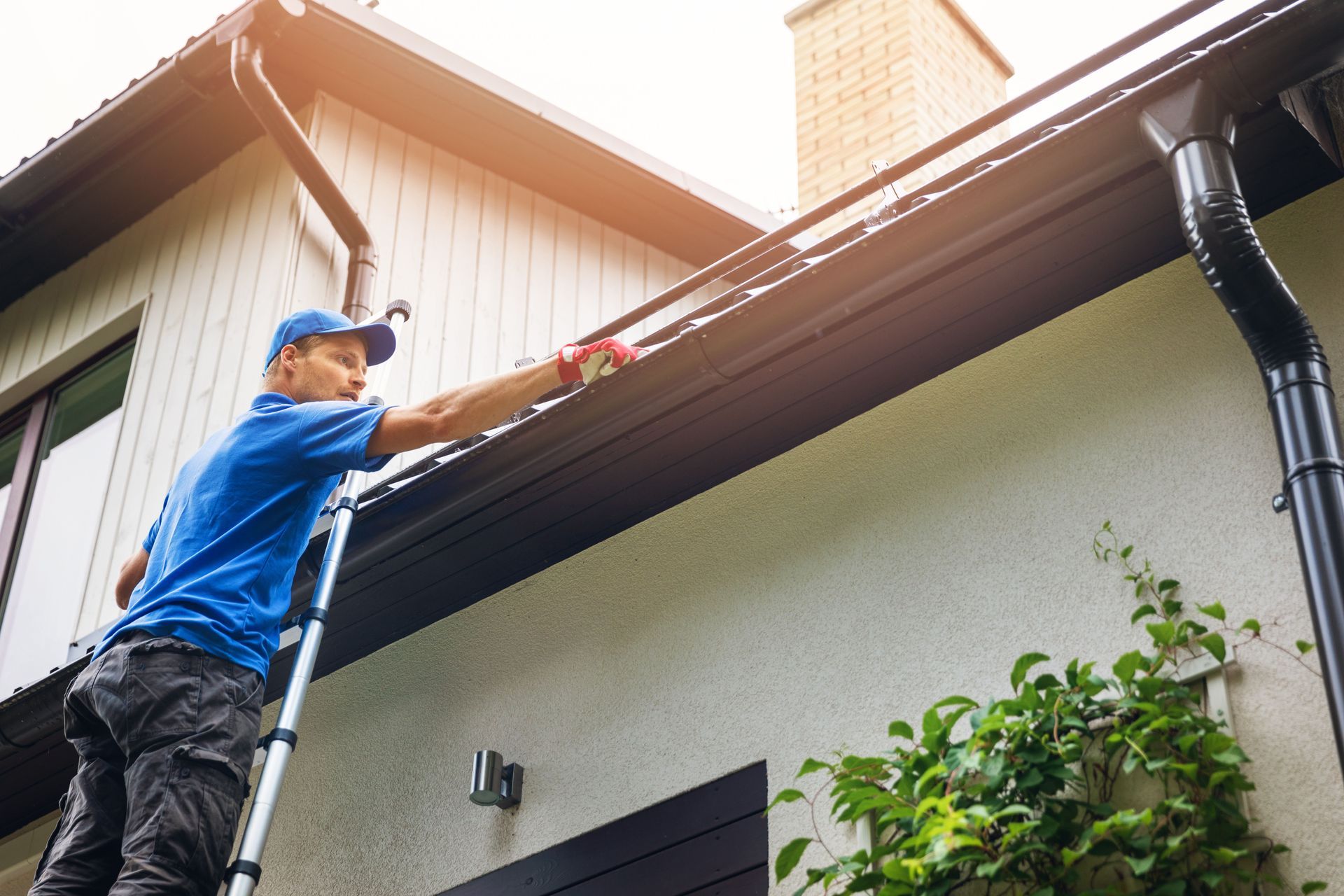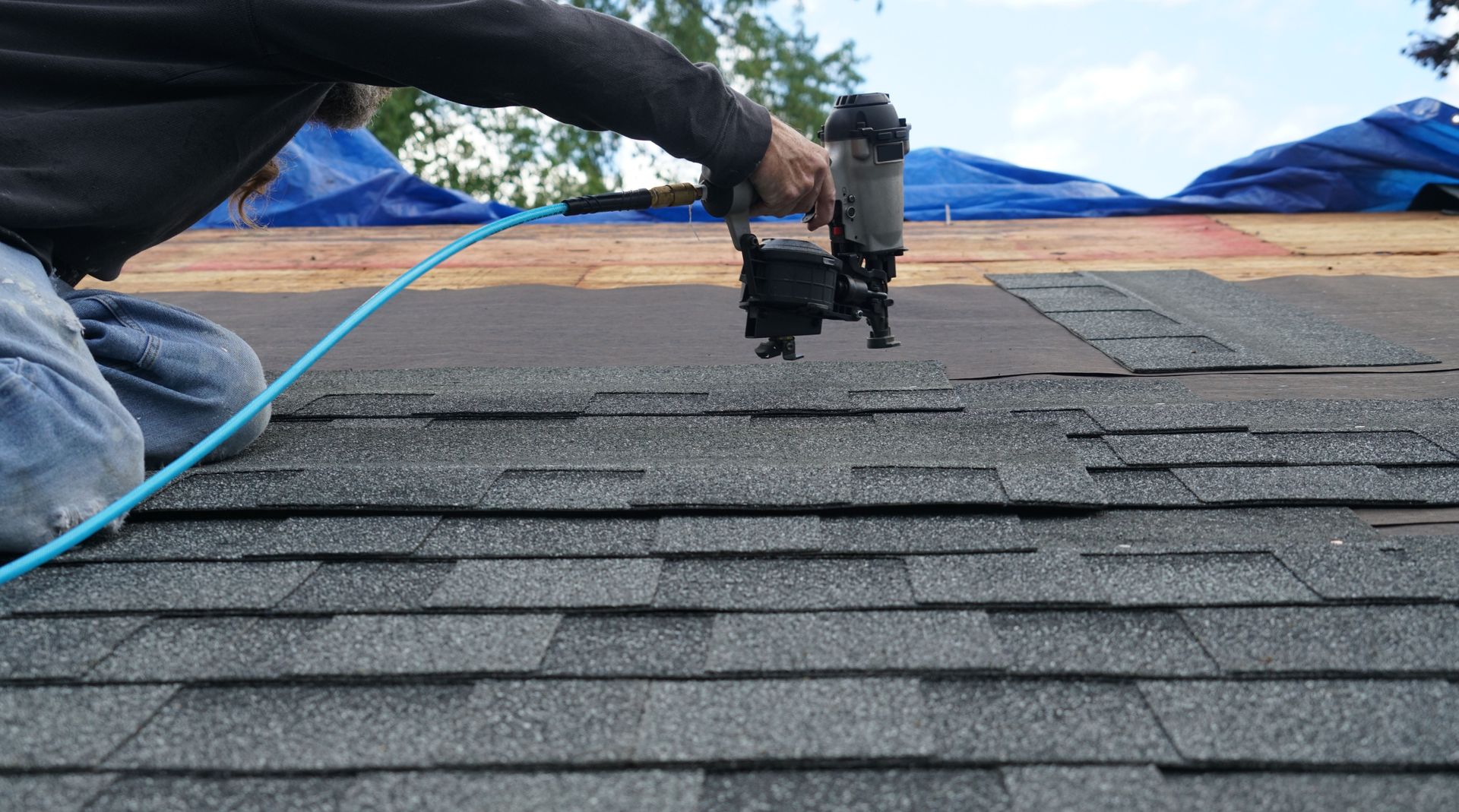What Should I Do if My Roof Is Leaking?
By Scott & Karen Dillman | June 28, 2025
Highlights
- Take immediate steps to contain water and protect belongings
- Apply temporary solutions like tarps or roofing cement
- Hire a professional for a full inspection and permanent repair
- Document all damage for potential insurance claims
- Prevent future leaks with routine roof maintenance
Quick Action Helps to Limit Damage
If you discover water leaking from your ceiling, time is of the essence. Begin by placing buckets or containers to collect dripping water and minimize flooring damage. Remove rugs, electronics, or furniture from the affected area, and dry anything that gets wet. It’s unsafe to climb onto a wet roof, so stay inside and manage the leak from within. If you can safely access the attic, look for the entry point and mark it. Limiting moisture exposure quickly can reduce the risk of mold growth and structural weakening.
What’s the first step when I spot a leak?
Contain the water, move belongings, and call a roofing professional as soon as possible.
Should I climb on the roof to inspect it?
No. Wet roofs are slippery and dangerous. Always wait for a professional.
Will one leak ruin my insulation?
If left unattended, even one leak can saturate and degrade insulation quickly.
Use Temporary Measures to Control the Leak
While waiting for help, apply temporary patches to stop further water intrusion. Use waterproof tarp, roofing tape, or roofing cement to cover small openings. These materials are available at most hardware stores and can buy you time until professional repairs are completed. Avoid pressing or poking areas with water bubbles on ceilings—they can burst and cause more interior damage. Instead, carefully pierce a small hole to drain the water in a controlled way into a bucket below.
In addition to standard materials like roofing tape or cement, homeowners can benefit from modern leak barrier membranes that temporarily seal off affected areas with stronger adhesion and water resistance. These are especially useful for flat or low-slope roofs where pooling water is a risk. If you're unsure which product suits your roof type, consult your local hardware supplier or roofer before applying. Just remember, any DIY solution should only serve as a stopgap, not a replacement for certified repairs.
Call a Roofing Professional for Inspection
After taking basic containment steps, contact a local roofing expert to assess the issue. For homeowners in Urbana, IL, reaching out to a residential roofing contractor in Urbana, IL that offers free quotes can provide clarity without financial commitment. Roofers will examine shingles, flashing, underlayment, gutters, and attic space to identify the leak’s source and recommend repairs. A qualified team like Dillman Brothers brings the tools and training necessary for safe, permanent fixes.
When selecting a roofing contractor, consider asking about their experience with similar leaks, their response times, and whether they conduct free inspections or estimates. Many reputable roofers also use technology like drone imaging or thermal scanners to pinpoint the exact leak location. This not only improves accuracy but also prevents unnecessary repair costs by eliminating guesswork. An experienced roofer will walk you through photos or findings from their inspection and clearly outline your repair or replacement options.
How fast should I get the roof inspected?
Within 24–48 hours of discovering the leak to minimize long-term damage.
Can I just patch the leak myself?
Temporary patches are fine, but lasting repairs require expertise.
What does a roof inspection involve?
It includes checking shingles, underlayment, attic, flashing, and nearby drainage areas.
Understand the Most Common Leak Sources
Leaks frequently originate from spots on your roof where the structure is weakest or where water convergence occurs, such as missing shingles, damaged flashing, ice dams, inadequate runoff, and structural damage. According to HomeAdvisor, leaky roofs are commonly caused by missing shingles, damaged flashing, ice dams during the winter, inadequate runoff, and structural damage. Conducting regular visual checks—particularly after rain or snow—can help homeowners identify these issues early and prevent extensive water intrusion and interior damage.
Determine If Repair or Replacement Is Needed
Not every roof leak requires a full replacement. If damage is localized and your roof is relatively new, a simple repair may be sufficient. However, age and wear play a vital role in the decision. According to
This Old House, an average roof lasts 25 to 50 years, depending on material type—if your roof exceeds that lifespan or has widespread damage, replacement may be more cost-effective than patching multiple leaks over time.
What’s the average roof lifespan?
Asphalt shingle roofs usually last 20–25 years with good maintenance.
Can hail or wind cause invisible damage?
Yes. Impacts can loosen shingles or damage underlayers without visible signs.
Should I get a second opinion?
Absolutely. For major repairs or replacements, comparing quotes is wise.
Document Everything for Insurance Claims
If the leak stems from a covered event like hail, wind, or fallen debris, you may be eligible to file an insurance claim. Photograph all damage—interior and exterior—and save all repair estimates and receipts. Documenting your cleanup process can also support your case. Contact your provider early to understand your policy and claim process. Having a roofer who’s familiar with insurance documentation can also help streamline the inspection and reporting process.
Dry and Restore the Interior
Once the source of the leak has been repaired, turn your attention to the inside of your home. Use fans and dehumidifiers to dry ceilings, insulation, and drywall. Inspect for mold over the next few days, especially in corners or behind walls. If you find signs of mildew or musty odors, consider scheduling a professional mold assessment. Water left unchecked can quickly compromise indoor air quality and cause structural rot.
In more severe cases, water damage may extend beyond just drywall and insulation. Electrical systems in the ceiling, HVAC ductwork, and even ceiling joists can be compromised if exposed to prolonged moisture. For safety, have an electrician inspect any wiring or fixtures near the leak zone. If wooden framing members remain wet too long, they can warp or weaken, posing a long-term risk to structural integrity. Restoration professionals can test moisture levels in building materials to ensure all water has been removed before you rebuild.
Prevent Future Leaks With Maintenance
One of the best ways to avoid future leaks is consistent upkeep. Clean gutters in spring and fall, check for loose shingles after storms, and trim tree limbs that hang over your roof. Biannual inspections by a trusted roofer can identify flashing issues, sealant failures, or developing cracks before they escalate. Preventative maintenance is especially important for older roofs approaching the end of their service life. It’s a small investment that can save thousands down the road.
Roof leaks can start small and lead to big problems if ignored. By acting quickly, contacting a professional, and taking steps to maintain your roof over time, you can avoid costly repairs and safeguard your home. For trusted service in Urbana, IL, Dillman Brothers stands out as a dependable choice. If you’re searching for a residential roofing contractor in Urbana, IL that offers free quotes, their team provides prompt, transparent assistance. Don’t wait for a minor leak to become a major issue—take control with timely action and the right roofing support.











Share On: